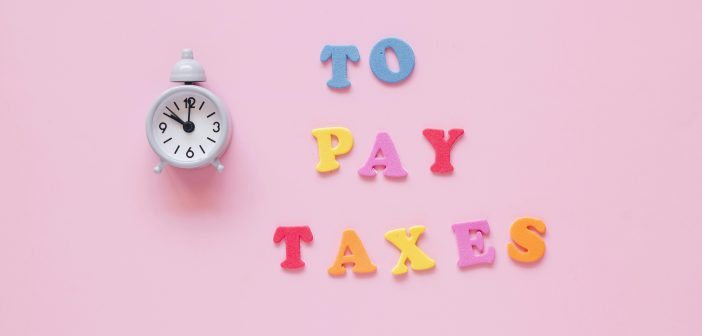Imagine walking into a store in India and being charged more for a product simply because it’s designed for you, as a woman. It might sound like a scene from a dystopian film, but it’s a harsh reality – the “pink tax.” This unfair practice sees identical or similar products marketed towards women priced higher than their male counterparts.
A Nationwide Problem
The pink tax isn’t a problem limited to some faraway land. It’s a sneaky thief lurking right here in Indian stores. From razors to clothing, companies often inflate prices for women’s versions, even when they’re practically the same. This isn’t just frustrating, it’s downright unfair.
Why Does it Matter?
Think about it. Women in India already earn less than men. This pay gap makes every rupee count. The pink tax makes basic necessities a bigger burden, widening the financial gap between genders. It’s like being penalized simply for being a woman.
Products in the Pink Spotlight
The pink tax isn’t shy; it targets various everyday items:
- Bathroom Essentials: Razors, shaving cream, deodorants – all these basic hygiene products often cost more in their pink-packaged, “women’s” versions.
- Fashion Faux Pas: Women’s clothes, with their intricate designs and supposedly “premium” fabrics, come at a hefty price. But is the difference in cost justified by a few extra buttons or a slightly different cut? Often, no. The same goes for handbags and purses – they’re often pricier than men’s wallets and briefcases, even when offering similar features.
- Toy Troubles: Even in the playful world of toys, the pink tax strikes. Dolls and stuffed animals marketed towards girls can be more expensive than action figures and cars for boys, even when the complexity is similar. Is playing make-believe supposed to cost more for girls?
Beyond the Rupee Sign: A Psychological Play
The real sting of the pink tax goes beyond the price tag. It exploits the idea that women are more concerned with beauty and appearance. Companies often market products with the promise of improved looks or a feeling of being “put-together,” making women more susceptible to these inflated prices. This reinforces the harmful notion that a woman’s worth is tied to her looks.
Fighting Back: It’s Time to Break Free
Combating the pink tax requires a united effort. Legislative changes, like those being discussed in some states, could help create a fairer marketplace. But as consumers, we also have a role to play.
Be Price Savvy: By actively comparing prices and being aware of the pink tax, we can send a strong message to manufacturers. Support brands that offer gender-neutral pricing and advocate for fair practices.
Challenge the Stereotype: The pink tax thrives on gender stereotypes. Let’s challenge these outdated notions by promoting equality in all aspects of life.
A Future Free From Pink Taxes
The pink tax is more than just an economic issue; it’s a symbol of a larger problem – gender inequality. By taking action, we can dismantle this system. Let’s work towards a future where the value of a product is based on its function, not the color of its packaging or the gender it’s aimed at. It’s time to break free from the pink tax and create a marketplace that’s fair for all.
Now that we’ve exposed the pink tax’s sneaky tactics, let’s explore practical ways to fight back in your daily life:
-
Become a Label Detective: Don’t be fooled by marketing gimmicks. Look beyond the pink packaging and floral prints. Scrutinize the ingredients and functionality of products. Are they truly different from their supposedly “masculine” counterparts? Often, the answer is a resounding no.
-
Embrace Unisex Options: Many brands are offering unisex razors, deodorants, and clothing lines. Explore these options and see if they fit your needs. Not only will you save money, but you’ll also be making a conscious choice against the pink tax.
-
The Power of the Purse: Support brands that are vocal advocates for gender-neutral pricing. Look for companies that promote inclusivity and fairness in their marketing and pricing strategies. Your buying power speaks volumes.
-
DIY (Do It Yourself) When Possible: Consider making your own cleaning solutions, beauty products, or even small gifts. There are numerous online resources with easy-to-follow recipes and tutorials. Not only will you save money, but you’ll also gain control over the ingredients and avoid the pink tax markup.
-
Second-Hand Savvy: Thrift stores and online marketplaces offer a treasure trove of pre-loved clothes, handbags, and other items. You can find high-quality products at a fraction of the original price, often from reputable brands. Not only is it eco-friendly, but it also helps you bypass the pink tax altogether.
-
Spread the Word: Talk to your friends and family about the pink tax. Educate them about this unfair practice and encourage them to be mindful consumers. The more people who are aware, the stronger the movement for change becomes.
Remember, every rupee saved is a victory against the pink tax. By making informed choices and supporting fair practices, we can create a marketplace where value is based on quality, not gender. It’s time to rewrite the script and break free from the pink tax’s hold on our wallets and our sense of equality. Let’s empower ourselves and each other to be smart consumers and advocates for a fair deal, one purchase at a time.





